Transport
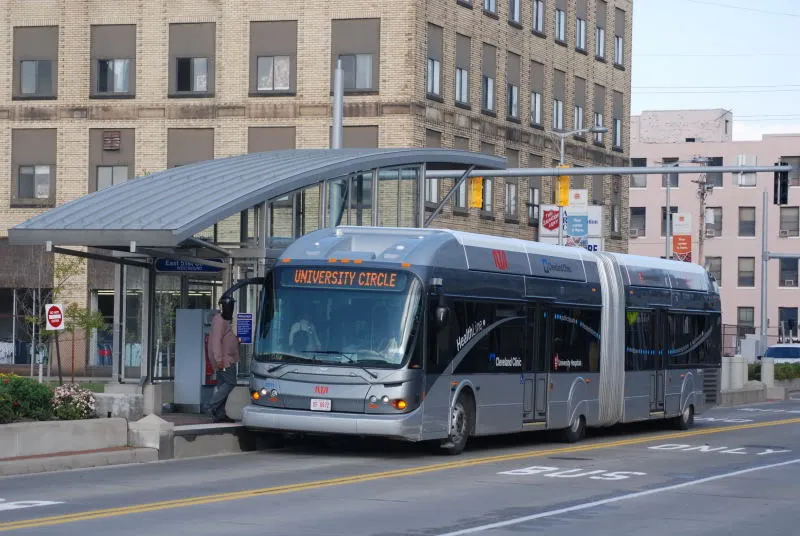
Transport
Cleveland State University Cancels U-Pass Transit Passes: Students at a Crossroads
In a surprising decision that has sparked a wave of concern among students, Cleveland State University (CSU) announced the termination of the U-Pass program, which provided access to public transportation of the Greater Cleveland Regional Transit Authority (RTA) for all registered students. This change, effective from the 2025 fall semester, raises questions about the accessibility and safety of transportation options for thousands of young people who relied on this system for their daily commutes.The U-Pass program, launched in 2007, was a cornerstone of student life at CSU, allowing students who paid a semester fee of $57.50 to unlimitedly use buses, trains, and other RTA transport modes. For many, it was not just a convenience but also a financial support that helped save on transportation costs in a city where parking and safety remain issues of concern. According to the university, the program generated $1.4 million in annual revenue for RTA, but fewer than half of the students actively used the passes.CSU President Laura Bloomberg explained in a letter to students sent last Wednesday that the decision was driven by Bill No. 96, which prohibits charging equal fees for services to all students regardless of their participation. “This is the legal reality we must accept,” she wrote, adding that the university is actively working on a new solution that will allow students to voluntarily join the U-Pass program.For students like Ray Feinhold, a 20-year-old computer engineering student, the cancellation of U-Pass was a blow. “It was my way of exploring Cleveland,” she said in an interview while sitting in a cafe near campus. Feinhold shared that after her car was vandalized downtown, public transit became not only an economical but also a safer choice for her. “Paying $300 for a parking permit and worrying about my car being robbed again? No, thank you. The bus is fast, safe, and convenient.”The cancellation has sparked a broader discussion about the accessibility of public transportation in Cleveland, a city where infrastructure and safety remain challenges for many. Local activists note that although RTA’s transportation network is extensive, it is often criticized for irregularity and limited availability in the evening hours, which especially affects students with tight schedules.In response to criticism, CSU and RTA stated that they are already working on a new program that will enable students to voluntarily purchase U-Pass rides. On Tuesday, Bloomberg sent another letter promising that details of the new initiative would be presented at an information session via Zoom next Wednesday at 11:15 am. The university hopes that the voluntary model will preserve the benefits of the program for those who need it while complying with new legislative requirements.However, for students accustomed to uninterrupted access to transportation, the uncertainty causes anxiety. “It’s more than just a pass,” Feinhold said, holding a cup of coffee. “It’s about how we live in this city, how safe we feel, how we build our future.”While Cleveland State University seeks a compromise, students are waiting for answers. Whether the new program can preserve the spirit of U-Pass — accessibility, convenience, and safety — remains to be seen. But one thing is already clear: for many young people in Cleveland, transportation is not just logistics but a matter of justice and opportunities.
19.08.2025
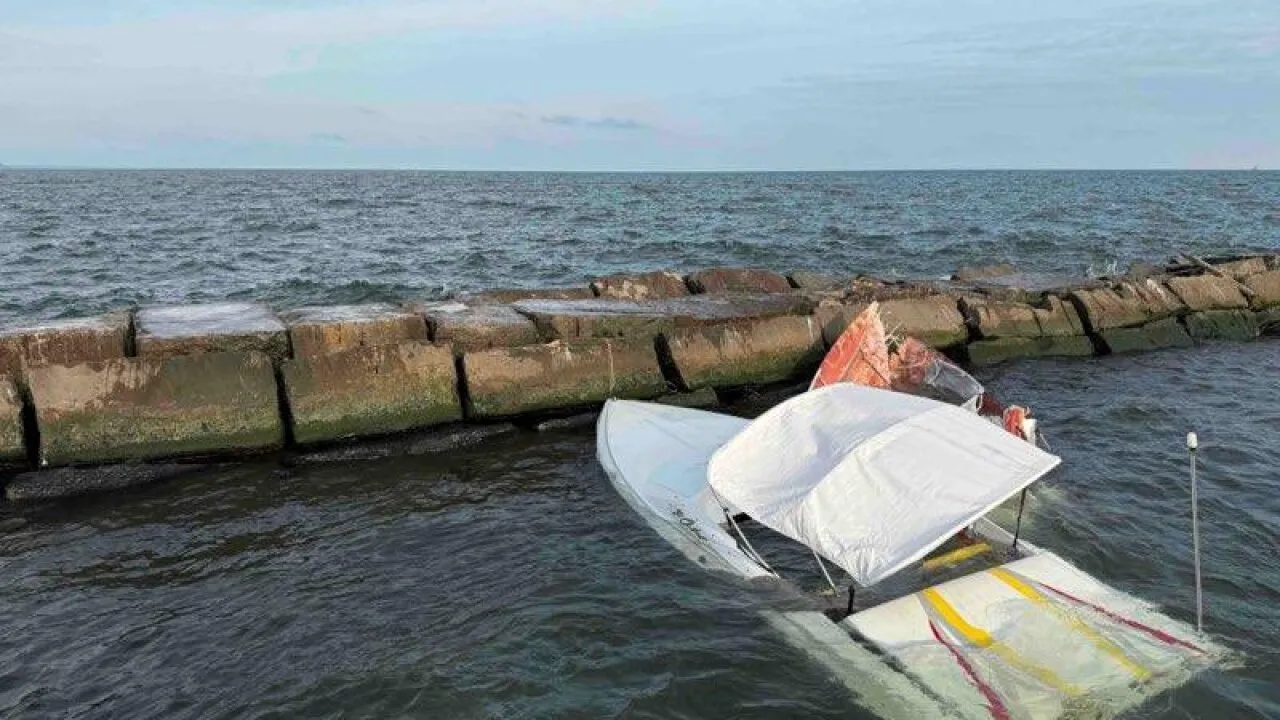
Transport
Tragedy on the Great Lakes: boat crashes into a breakwater, two in critical condition
On Sunday morning, as the first rays of the sun barely pierced through the morning fog over Lake Erie, the tranquility of Cleveland's harbor was shattered by tragedy. Around 7:20 local time, a speedboat rammed into a massive concrete breakwater at the western edge of the harbor, leaving two people in critical condition and raising a wave of questions about safety on the Great Lakes waters.
According to the U.S. Coast Guard, which responded promptly to the call, the vessel suffered a catastrophic collision, literally splitting against the sturdy structure of the breakwater. Rescue teams who arrived at the scene found two victims in serious condition, their boat shattered, and hope for a quick recovery fading. Paramedics immediately transported the injured to the nearest hospital, where, according to latest reports, they are fighting for their lives.
Currently, the cause of the accident remains a mystery. Coast Guard investigators, who have already begun their investigation, are considering all possible scenarios: from technical failure to human error. One insider close to the investigation, speaking on condition of anonymity, suggested that the morning fog could have played a role, complicating visibility for the vessel's pilot. However, no official conclusions have been made, and the Coast Guard is withholding comments until all facts are gathered.
This incident casts a shadow over boating safety in the region, where the Great Lakes, despite their scenic beauty, are known for treacherous currents and sudden weather changes. Local residents and water safety experts already express concerns about the insufficient number of warning signs or lighting near the harbor breakwaters in Cleveland. "This isn't the first time boats have collided with these barriers," said one local sailor who wished to remain anonymous. "Breakwaters are silent guardians, but they can be deadly if you don't know where you're going."
The tragedy also raises broader questions about the regulation of recreational boating. During the season when the lakes come alive with yacht and fishing activity, is enough being done to ensure safety? Some experts argue that stricter rules regarding skipper qualifications and vessel maintenance are necessary, especially after a series of similar incidents in the region in recent years.
While the investigation continues, Cleveland mourns another tragedy on its waters. For the two people currently hospitalized, every minute is a fight. And for the Great Lakes community, this accident is yet another reminder that the beauty of the lakes conceals dangers that do not forgive mistakes.
18.08.2025

Transport
Explosion on the island: boat catches fire during refueling, igniting another — one person wounded in Put-in-Bay
During the peak of the summer season, when Lake Erie becomes a magnet for thousands of sailors and tourists, the idyllic Put-in-Bay Island, known as the "Key West of the North" for its lively party atmosphere and water adventures, became the scene of a dramatic incident. On Saturday afternoon, around 2:30 PM, a boat refueling near the fuel dock at The Boardwalk suddenly exploded, drifting into open water and igniting a nearby moored vessel. One person was injured, and both boats were likely completely destroyed, with potential damages running into millions of dollars, according to local marine accident experts.
According to the Put-in-Bay fire department, the dock security immediately prevented the firefighters from approaching when the flames engulfed the first vessel during routine refueling. The boat owner, facing an unavoidable catastrophe, jumped into the water to escape the rapidly spreading fire. Rescue teams swiftly pulled him from the lake, after which the injured person was evacuated by a paramedic helicopter to a continental hospital for treatment of burns and possible impact injuries. Black smoke billowed at least 100 feet into the sky, creating a chaotic scene captured on video by witnesses on the island for recreation.
Joint efforts by the U.S. Coast Guard, Put-in-Bay Fire Department, and local emergency services allowed for rapid containment and extinguishing of the fires on both vessels. "It was a classic chain reaction, where one incident triggered another," said an industry insider familiar with similar cases on Lake Erie. "Refueling on the water always carries risks, especially in crowded harbors where a spark can turn routine into disaster." Currently, there is no official damage estimate, but sources in the boating community estimate losses at hundreds of thousands of dollars, considering that both vessels—likely expensive recreational boats—ended up as charred wreckage.
This incident highlights a broader safety issue in recreational boating that regulators and experts have been concerned about for years. According to the U.S. Coast Guard, over 200 incidents involving fires and explosions on boats have been registered nationwide in 2024, resulting in at least 100 injuries and several fatalities, often due to fuel system malfunctions or mishandling of fuel. In Florida, for example, about 35 such fires are reported annually, and the national statistics show a steady trend where fires on water are becoming an increasingly common challenge for rescuers. Put-in-Bay, with its rich history—from Commodore Perry’s victory in the War of 1812 to its modern status as a yachting hub—has faced boating accidents before: past incidents, including angler fatalities in 2014 and ship groundings, remind us of the vulnerability of this picturesque corner of Lake Erie.
The investigation into the cause of the explosion is ongoing, but industry insiders are convinced: such events serve as a reminder of the need for stricter adherence to safety protocols, especially during peak season when harbors are crowded. "Water does not forgive mistakes," noted a veteran of the Coast Guard, "and this incident could catalyze new regulations to prevent tragedies in the future." As the island returns to its usual rhythm, this explosion remains a stark reminder of the fragile line between entertainment and risk on American waterways.
11.08.2025
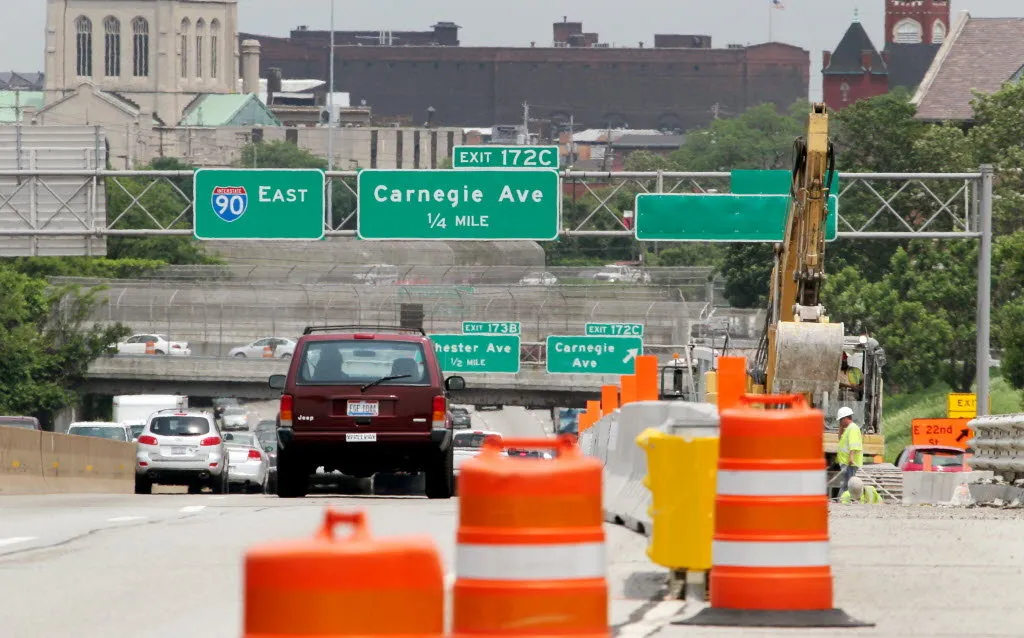
Transport
Chaos on Carnegie Avenue: How Road Renovations Are Stifling Small Businesses in Downtown Cleveland
Along Carnegie Avenue, this artery pulsating right in the heart of industrial Cleveland, orange barrels and construction cones have become a symbol not only of progress but also of quiet economic catastrophe. For local entrepreneurs like Lenny Weis, co-owner of the Bee Clean Car Wash, which has endured nearly six decades of economic storms—from the stagflation of the 1970s to the recession of 2008—the current street reconstruction has become the most serious threat. “Winter is coming soon,” Weis says with a note of despair I’ve heard from many small business owners in similar situations across the country. “I don’t know if we can hold on another year without our business.” His words echo a broader reality: while federal investments in infrastructure, such as the Infrastructure Investment and Jobs Act, promise long-term revival for cities like Cleveland, short-term sacrifices often fall on the shoulders of those who can least afford it.
Since February of this year, Weis and other business owners along Carnegie Avenue — from East 55th to East 79th Streets — have sounded the alarm about the reconstruction project that has transformed this lively thoroughfare into a labyrinth of detours and obstacles. The project, part of the ambitious “re-inCarnegie” plan by MidTown Cleveland, aims to modernize the road, improve pedestrian access, and integrate with public transportation — initiatives that, according to insider assessments from the Ohio Department of Transportation, could boost the local economy by millions of dollars in the long run. But for Weis, the reality is different: customers simply cannot reach his location. The situation worsened sharply when construction shifted from the south side of the road to the north, blocking access points and creating chaos reminiscent of similar projects in Detroit or Philadelphia, where small businesses lost up to 30% of income due to temporary inconveniences.
To understand the depth of the problem, I joined Weis and reporter Caitlin Hunt from the local News 5 during a tour of the area — and what we saw was a compelling testament to bureaucratic indifference. Starting at the intersection of East 55th and Carnegie, we immediately encountered a rerouting that made us circle around the detour signs, which led back to the same row of orange cones. At East 79th, the situation grew even more confusing: a traffic light without clear instructions forced us to turn onto Cedar Avenue, relying solely on Weis’s local knowledge to get back to the car wash. “Many customers, when they arrive, say, ‘Oh my God! It was hard to get here,’” Weis shared, and his words are supported by data: according to the American Small Business Association, similar construction projects can lead to a loss of 20-50% of clientele, especially in low-traffic areas.
Weis is convinced that the root of the problem lies in the lack of adequate signage. “We need more signs indicating how customers can reach the businesses, where obstacles are located, and how to avoid them,” he emphasizes. Hunt relayed these concerns to the Cleveland city authorities, and the response came via email — a typical bureaucratic reaction I have seen in many municipalities. The city stated that one of the detours we encountered would be reopened as a two-way route a few days after asphalt paving, using faster-drying materials to expedite works and maintain access to businesses. “Due to the nature of these works, road construction sometimes causes inconvenience to passengers and to the businesses on Carnegie,” officials acknowledged, adding that they are doing everything possible to reduce issues. However, when asked about additional assistance — such as opening alternative routes or installing more signs — the response was evasive, without concrete promises. This is not surprising: according to my sources in city planning departments, budgets for such projects often do not include compensation for businesses, despite federal recommendations.
Relief may not come soon for Weis. Right across from the Bee Clean Car Wash, between East 79th Street and Martin Luther King Drive, signs of the second phase of the project have already appeared, according to official city data, which began in July 2025 and is scheduled to be completed by November 2026. This phase, a continuation of the work started back in 2023, promises to transform Carnegie into a modern urban street, but for small businesses, it means another year and a half of uncertainty. In the context of Cleveland’s broader revival — from the reconstruction of I-90 to the development of MidTown — stories like Weis’s serve as a reminder of the cost of progress. Will the city manage to find a balance between ambitious plans and safeguarding the local economy? For now, the orange barrels stand firm, and businesses battle for survival, hoping for better days ahead.
11.08.2025

Transport
Persecution in Cleveland: Dawn Chaos, Arrests, and Unanswered Questions
In the pre-dawn silence of early Tuesday morning, the peace of the Cleveland industrial district was shattered by gunfire and siren wailing when a high-speed chase involving the Kayagoga County sheriff's office ended dramatically with an accident that left more questions than answers. The incident, which unfolded at the intersection of East 40th Street and Commerce Parkway, drew attention to law enforcement tactics and the tense atmosphere in the city, where public trust in the police remains fragile.
According to law enforcement sources, it all began around 2:30 a.m. when multiple calls reported dozens of gunshots in the area of East 40th Street and Quincy Avenue. The Kayagoga County sheriff's department responded to the call, initiating a pursuit of a Kia vehicle that, witnesses say, was speeding through the dark streets of the industrial district. The chase, which lasted several minutes, ended when a sheriff's patrol car crashed into a building, and the Kia collided with a pole near the intersection of East 40th Street and Kelly Avenue.
The scene, captured by The New York Times' nocturnal news tracker, resembled footage from a Hollywood action movie: a wrecked patrol car, debris on the road, and flashing lights illuminating the gloomy cityscape. Officers, armed with flashlights, searched the area, and several were seen on the roof of a nearby building, likely observing the fugitives. According to our reporter on the scene, at least two suspects were detained after attempting to hide in the bed of a pickup truck nearby.
The Kayagoga County sheriff's office has yet to comment on the incident details, citing an ongoing investigation. However, sources close to the department suggest that the pursuit may have been part of a broader operation aimed at addressing the spike in gun violence in the area. Just last month, Cleveland experienced an increase in shooting incidents, prompting local officials to intensify patrols in trouble spots.
This incident has raised concerns among residents who have long expressed unease about the aggressive tactics of law enforcement. "It's scary when you hear gunshots and then see police chasing through the streets," says Marisa Jones, a local resident living two blocks from the scene. "But do these chases really solve the problem? Or do they just make things worse?"
Questions about the safety and effectiveness of such operations remain open. According to the National Institute of Justice, high-speed pursuits often result in accidents, injuries, and even deaths—not only among suspects but also among officers and innocent bystanders. Fortunately, in this case, there were no casualties, but property damage and the tension caused by road closures only heightened the heightened sense of anxiety within the community.
As the police continue to search for other individuals involved in the incident, a broader citywide discussion is underway. Are such risky operations justified by their outcomes? And can Cleveland, a city with a complex history of community-police relations, find a balance between maintaining order and preserving public trust?
Currently, answers to these questions remain as elusive as the suspects who vanished into the night darkness.
07.08.2025
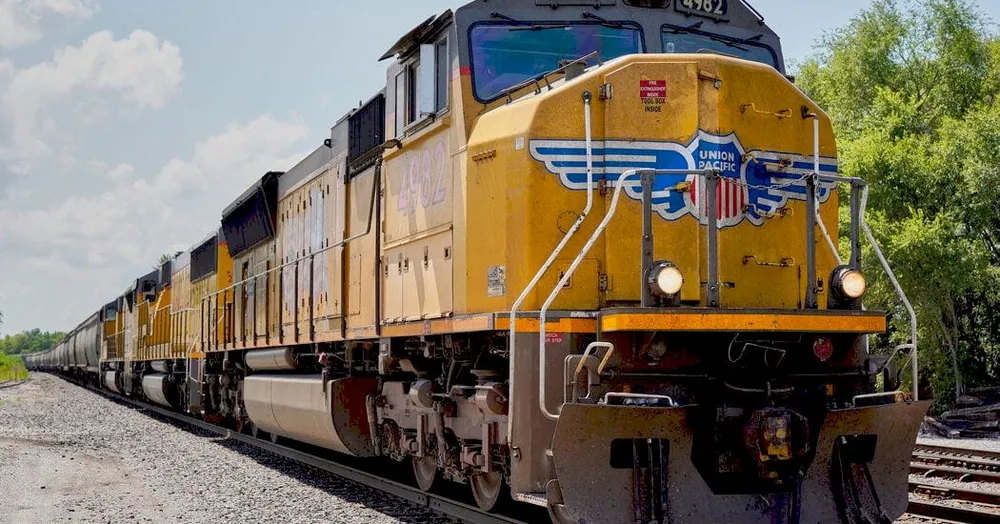
Transport
Transcontinental Giant: Union Pacific Offers $85 Billion for Norfolk Southern, Sparking a New Wave of Railroad Mergers
In a bold move that could redefine the landscape of American freight transportation, Union Pacific announced an $85 billion bid to acquire Norfolk Southern, aiming to create the first transcontinental railroad in U.S. history valued at over $200 billion. If approved, this deal will unite Union Pacific’s extensive network in the west with Norfolk Southern’s strong presence in the east, forming a giant capable of seamlessly transporting goods from the Pacific to the Atlantic.
Union Pacific CEO Jim Vena, an experienced veteran of the railroad industry, called the deal transformational, asserting that it will streamline supply chains for raw materials and industrial goods, from the timber of the Pacific Northwest to steel in Pittsburgh. “Railroads have been the backbone of the American economy since the industrial revolution,” Vena stated. “This merger marks the next phase of their evolution, providing faster and cheaper transportation in an age of global competition.”
The proposal includes $20 billion in cash and stock swaps, valuing Norfolk Southern at approximately $320 per share — a significant premium compared to its $260 share price at the start of the month. Markets responded cautiously: Union Pacific shares rose nearly 2% to $231.03 in pre-market trading, while Norfolk Southern shares declined 2% to $280, reflecting investor caution regarding potential regulatory hurdles.
Synergy or Monopoly?
The railroads forecast annual synergies of $2.75 billion through route efficiencies and operational cost reductions. The combined network will eliminate the need for freight transfers in the country’s interior, currently a weak point in logistics. However, the deal will inevitably face scrutiny from the U.S. Surface Transportation Board (STB), which, after the chaotic mergers of the 1990s, has set high standards for consolidating the rail industry.
History serves as a stern reminder. In 1996, Union Pacific’s merger with Southern Pacific led to major delays disrupting freight movement in the western U.S. Similarly, the division of Conrail between Norfolk Southern and CSX in 1999 caused chaos in the east. These episodes prompted regulators to be cautious of any deals that could disrupt the fragile balance in an industry that transports 40% of the country’s freight by volume.
Domino of Consolidation
If approved, the deal could trigger a domino effect in an industry with only six major freight railroads remaining. BNSF, owned by Warren Buffett’s Berkshire Hathaway, and CSX are likely to feel pressure to merge in order to compete with the new giant. Canadian railroads such as Canadian National and CPKC might also enter the consolidation race, striving to stay competitive in the North American market.
Industry insiders speculate that Buffett, who holds $348 billion in cash via Berkshire Hathaway, may be considering one last major deal before stepping down as CEO. Although Buffett recently denied rumors of engaging Goldman Sachs for rail deal consultations, his history of large acquisitions — such as the $26.3 billion purchase of BNSF in 2009 after a private meeting — suggests he could act quickly and decisively.
Regulatory and Economic Outlook
Antitrust regulators are likely to focus on the potential impact on competition and consumers. The combined Union Pacific-Norfolk Southern railroad would control a significant share of U.S. freight, which could lead to higher tariffs or lower service quality if competition declines. At the same time, railroads argue that the deal will promote economic efficiency, reducing delivery times and costs for producers and consumers.
There is widespread debate about whether the STB is willing to approve such a large-scale consolidation. Critics point to lessons from the 1990s, when mergers led to delays and economic losses. Supporters argue that modern technology and improved logistics can mitigate these risks, allowing the industry to adapt to a globalized economy’s demands.
Looking to the Future
Union Pacific’s proposal is more than a financial transaction; it is a bet on the future of American infrastructure. As the country grapples with supply chain challenges and economic competition from China and Europe, creating a transcontinental railroad could be a crucial step. However, the path to realization will be paved with regulatory and political hurdles that will test Union Pacific’s ambitions and its ability to persuade the nation of the necessity of this giant leap.
05.08.2025
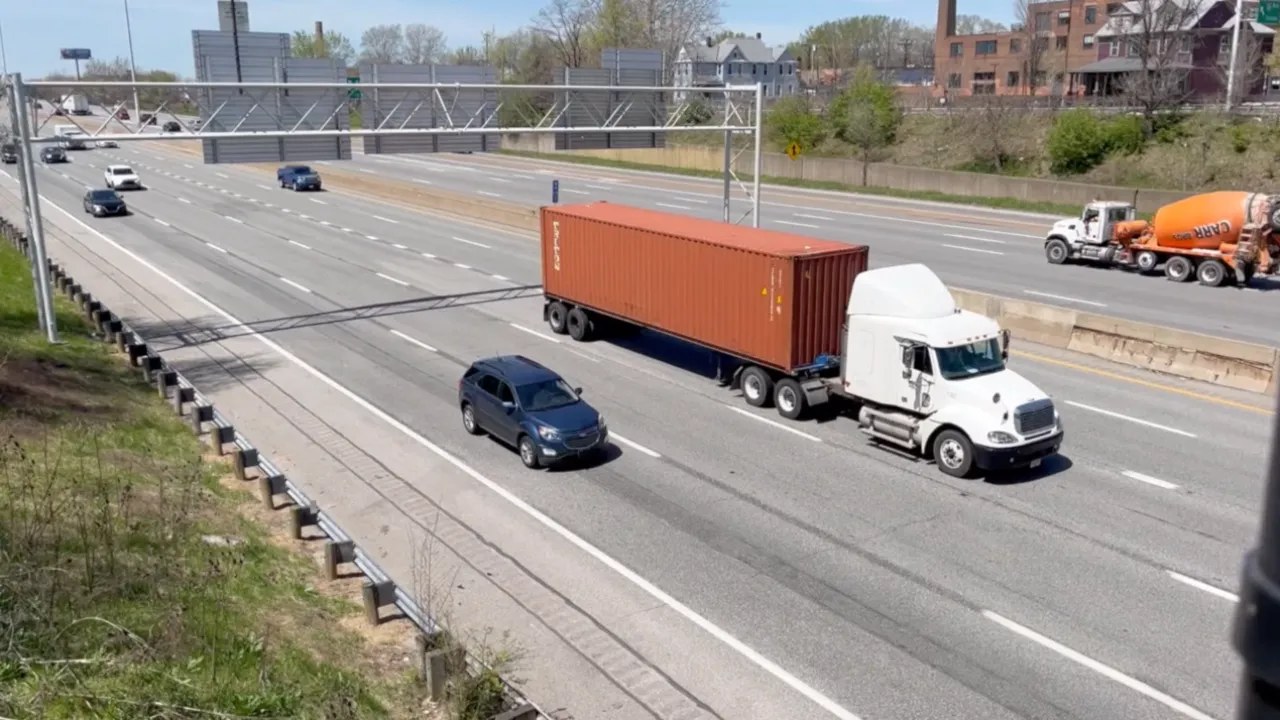
Transport
Extensive Reconstruction of Interstate 90: A New Era for Ohio’s Key Artery
Orange barrels, the rumble of heavy machinery, and cautious driver maneuvers will soon become a familiar sight along Interstate 90, where an ambitious $173 million construction project is launching. This reconstruction, covering the section from Rocky River to Cleveland, promises not only to upgrade outdated infrastructure but also to reimagine one of the region’s most important transportation arteries. However, like any large-scale project, it will require patience from drivers who rely on I-90 for their daily commutes.The project starting this week involves a complete resurfacing, reconstruction of median barriers, modernization of lighting, and widening of shoulders. However, according to insiders from the Ohio Department of Transportation (ODOT), the true cornerstone of the project is the overhaul of the drainage system — a critical element that has been neglected for decades. “These pipes, which are over half a century old, are like archaeological finds,” noted Brent Covax, an ODOT representative, in an interview with journalists. “We don’t know their current condition, but new systems will be much more efficient in preventing flooding, like the ones that paralyzed traffic last week.”Challenges and ProspectsThe work, which will begin on Monday during off-peak hours, starts with laying temporary surface on the section between Hilliard and West Boulevard. Starting Friday, August 8, eastbound traffic between Hilliard Boulevard and Alger Road will be limited to three lanes instead of four, likely causing delays. ODOT promises to regularly inform the public about further traffic restrictions and ramp closures, but local drivers are already preparing for inconveniences. “It’ll be tough, but if it means we won’t be splashing through puddles after every rain, I’m willing to endure,” says Marta Levytska, a Cleveland resident who commutes daily on I-90.According to sources close to the project, the reconstruction holds broader significance than merely repairing the road. Interstate 90 is the economic backbone of the region, connecting suburbs to downtown Cleveland and providing access to key industrial and commercial zones. Traffic jams and poor road conditions have long limited the potential of the local economy. Upgrading I-90 could serve as a catalyst for regional development, attracting new investments and easing logistics for businesses.Long-term Benefit Over Short-term DisruptionsDespite the ambitious goals, the project, scheduled for completion by October 2028, will face challenges. Insiders note that ODOT is dealing with a labor shortage and potential delays due to unforeseen issues, such as the condition of old drainage pipes. “It’s like open-heart surgery,” explains one engineer who wished to remain anonymous. “You don’t know what you’ll find until you open it up.”For drivers, this means years of detours, traffic jams, and route changes. However, ODOT insists that the end result will justify the inconveniences. A modernized road will not only improve safety and comfort but also reduce maintenance costs in the future. “This is an investment for the next 50 years,” emphasizes Covax.Looking to the FutureReconstruction of Interstate 90 is more than just road repair. It’s a story about how the region is trying to adapt to modern challenges, from climate change to growing economic needs. For Cleveland, a city striving to reclaim its reputation as an industrial hub, this project could become a symbol of progress — if, of course, drivers’ patience can withstand the test of orange barrels.
04.08.2025
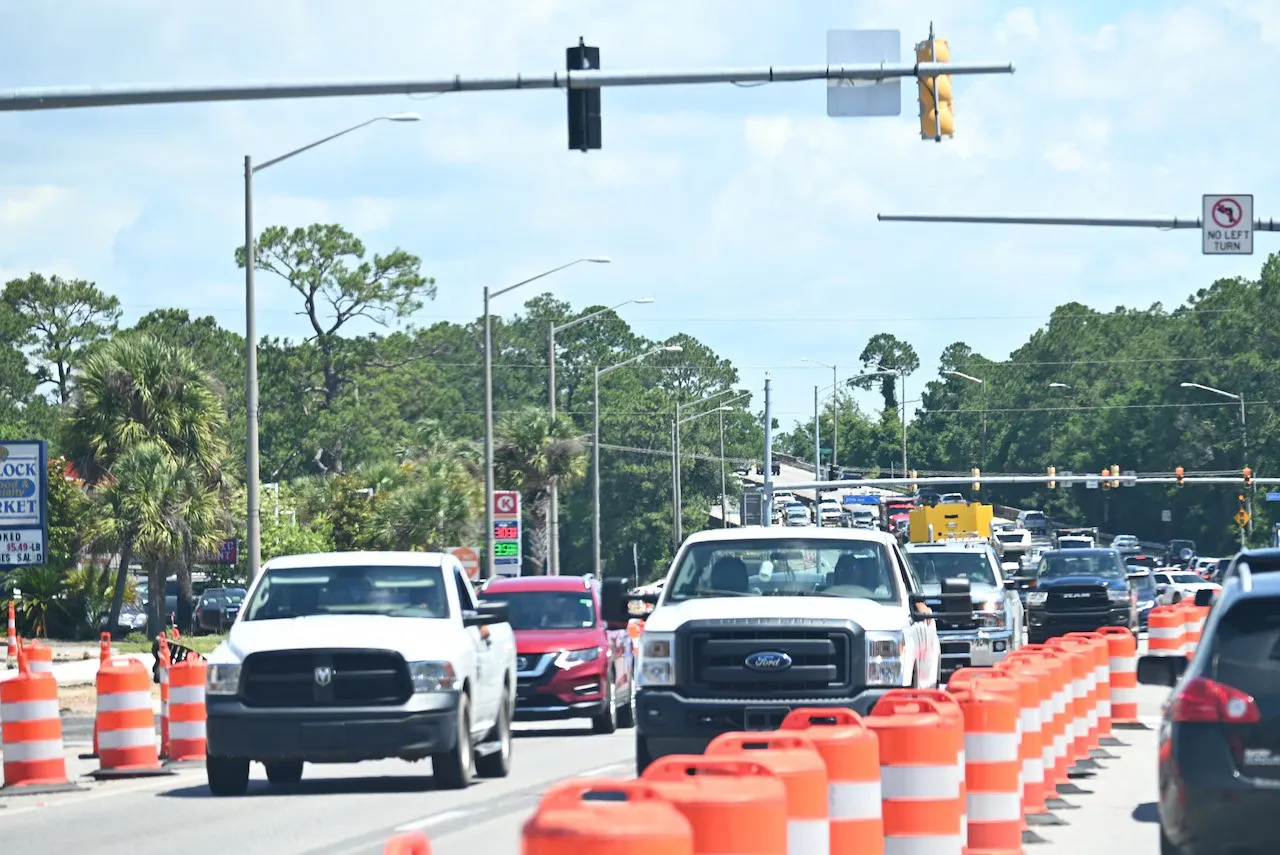
Transport
Reconstruction of I-490 in Ohio: a test for drivers and a promise of modernization
Starting from July 31, drivers in the Cleveland area will face new challenges on Interstate 490 as the Ohio Department of Transportation (ODOT) begins the next phase of its $70 million ambitious reconstruction project. This ongoing project, in its second year, involves repaving, repairing bridges over the Cuyahoga River, and upgrading infrastructure that officials say has long needed modernization. However, for thousands of local residents and transit drivers, this means months of inconvenience, detours, and the need to stay alert on the road.
New closures of exits complicate traffic
From Thursday, the westbound exit from I-490 to West 7th Street and the entrance from Rockefeller Drive onto westbound I-490 will be closed. According to ODOT, these closures are necessary for replacing worn pavement and performing major bridge repairs. Both exits will remain closed until November, forcing drivers to adapt to detours that are already causing concern among residents.
For those who regularly use the West 7th Street exit, ODOT has developed a detour route that runs via westbound I-490 to SR-176, then south to Steelyard Drive North, and ends at Quigley Road. Drivers entering I-490 from Rockefeller Drive will be redirected to Broadway Avenue North, then to East 30th Street, and further to I-77 southbound. Although these routes are carefully planned, they have already been met with skepticism by drivers worried about congestion and delays during peak hours.
“It sounds like a headache — says Linda Thomas, a local resident who commutes daily through I-490 — Detours are never as simple as promised, especially when everyone tries to travel at the same time.”
Broader context: upgrading outdated infrastructure
The I-490 reconstruction project is part of a broader initiative by the Ohio state to modernize interstates, many of which have not seen major repairs in decades. According to Brent Covax, a public relations representative for ODOT, the project encompasses not only asphalt replacement but also comprehensive infrastructure upgrades. “We are completely replacing the pavement, repairing bridges, drainage systems, concrete dividers, and even street lighting,” Covax explained. “This is a large-scale reconstruction aimed at making this section of I-490 safer and more efficient.”
Work on the bridges, especially those crossing the Cuyahoga River, is critically important. Bridges built in the mid-20th century are suffering from erosion and structural wear, posing potential risks to drivers. According to ODOT, bridge repairs include strengthening foundations and replacing degraded materials to ensure durability.
Challenges for drivers and construction workers
ODOT urges drivers to exercise caution as construction takes place on the western section of I-490. The presence of construction equipment and workers increases the risk of accidents, especially during heavy traffic. “We ask drivers to be attentive,” Covax emphasized. “Pay attention to signs, follow posted speed limits, and respect the zones where our teams are working.”
Local businesses near I-490 are also preparing for possible reductions in customer traffic due to limited access. “When the exits are closed, people find it harder to reach us,” notes Michael Ramiְrez, owner of a small coffee shop on West 7th Street. “We hope drivers won’t give up on visiting our area.”
Long-term benefit or short-term pain?
While the inconvenience of closed exits and detours is evident, ODOT promises that the project will meet expectations. Completion of the reconstruction, scheduled for fall 2026, aims to provide smoother traffic flow, safer bridges, and modern infrastructure that meets the needs of an expanding region. However, for drivers who travel I-490 daily, the coming months will be a test of patience.
In Cleveland, a city proud of its resilience, the I-490 reconstruction is yet another reminder of the cost of progress. While bulldozers roar and road signs redirect traffic, drivers can only hope that the promised modernization is worth the temporary discomfort.
29.07.2025
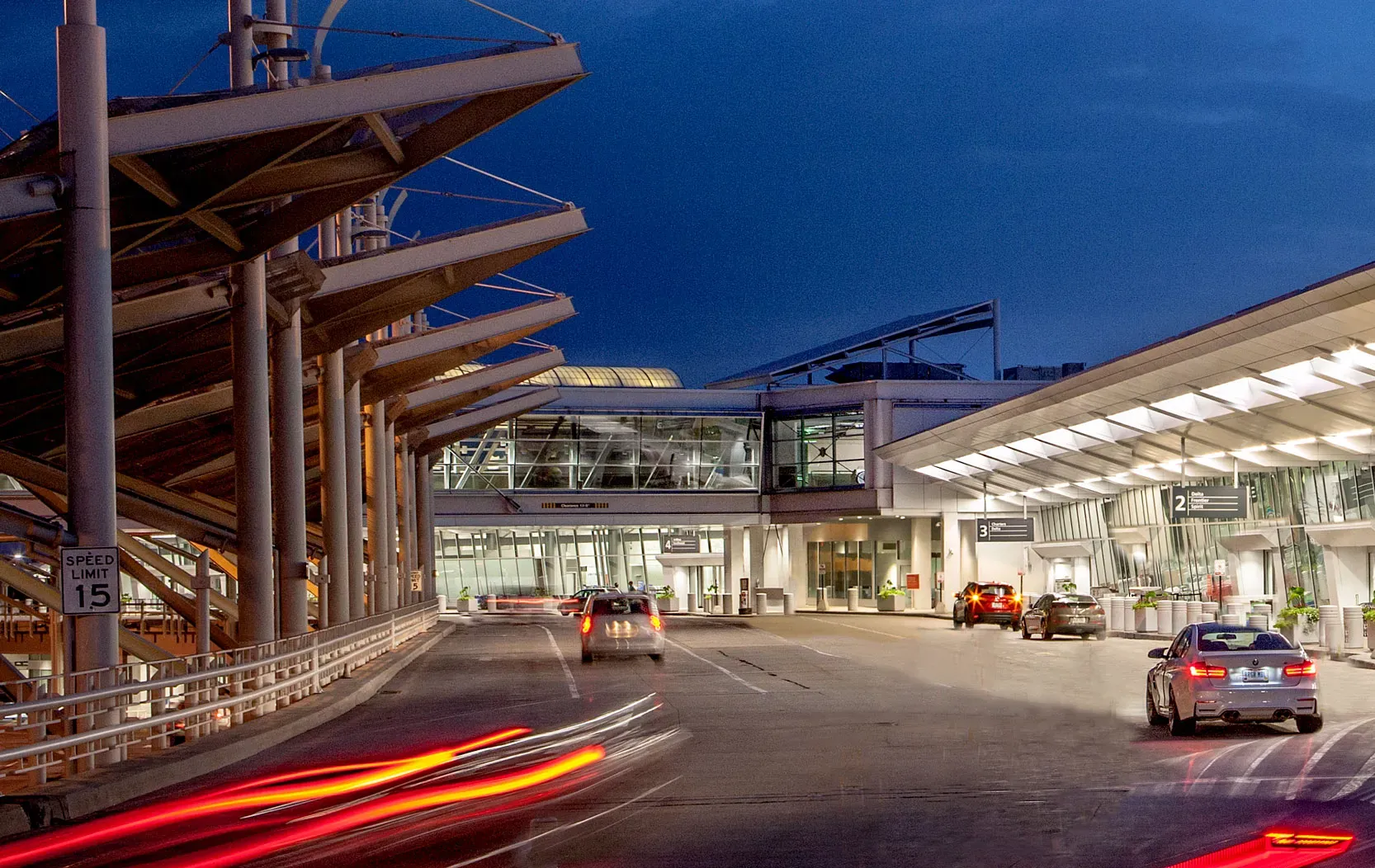
Transport
Cleveland Airport prepares an ecological revolution ahead of $1.6 billion reconstruction
While the aviation industry is under close scrutiny for its contribution to global warming, Cleveland Hopkins International Airport is taking an ambitious step toward a sustainable future. Last month, the airport completed its first Sustainable Development Management Plan — a comprehensive 139-page document outlining the pathway to reducing the facility’s environmental impact. This plan was unveiled ahead of a major $1.6 billion terminal redevelopment, which will commence next year and aims not only to modernize infrastructure but also to make the airport a model of environmental responsibility.The plan, encompassing 84 initiatives across six key areas, sets clear short- and long-term goals. Among them are achieving at least a gold level LEED certification for all new buildings and capital renovations, reducing emissions from airport vehicles, minimizing stormwater runoff, and replacing single-use items in the terminal with eco-friendly alternatives. “The new generation of CLE will become a world-class airport that simultaneously meets ambitious emission reduction targets,” stated Bryant Francis, the port’s Director of Control, in the introduction to the document.The airport already boasts some achievements: composting and waste recycling programs, the installation of a green roof, transition to LED lighting, and electric vehicle charging stations in Red Lot. However, as Elizabeth Lehman, the airport’s Sustainable Development Coordinator, noted, the key task for the coming year is data collection. “We will focus on creating processes and infrastructure to accurately assess our current state and establish realistic targets,” she explained. This approach will enable progress tracking and ensure transparency in achieving the ambitious environmental goals.The airport’s plan harmoniously aligns with the broader climate initiatives of Cleveland. It corresponds with the city’s updated Climate Action Plan, which aims for net-zero carbon emissions by 2050. Cleveland’s unique approach lies in its pragmatism: the airport not only focuses on its own operations but also plans to influence airline emission reductions, although this remains a challenging task due to limited control over carrier activities.The terminal reconstruction, scheduled to begin in 2026, will be a real test for these ambitions. According to insiders familiar with the project, the city seeks not only to upgrade outdated infrastructure but also to position Cleveland as a leader in sustainable aviation hub development. “This isn’t just about renovating the airport,” said one official who wished to remain anonymous due to confidentiality in negotiations. “It’s a chance to reimagine what an airport can be in the 21st century.”The sustainable development plan also envisions promoting alternative transportation options for passengers and staff. Increasing the use of public transit, bicycles, and pedestrian routes to the airport could significantly reduce its carbon footprint. Simultaneously, the airport plans to collaborate with local communities to integrate these initiatives into broader city planning efforts.While critics may consider these goals overly ambitious or utopian, proponents see Cleveland’s plan as a model for other airports striving to balance passenger growth with environmental responsibility. “If Cleveland can pull this off,” said one industry analyst, “it will send a signal to the entire aviation industry that sustainability and progress can go hand in hand.”Cleveland Hopkins, perhaps not the largest airport in America, but its commitment to sustainable development could make it one of the most influential. Ahead of the billion-dollar redevelopment, the city is betting that a green airport is not just a dream but an attainable reality.
26.07.2025